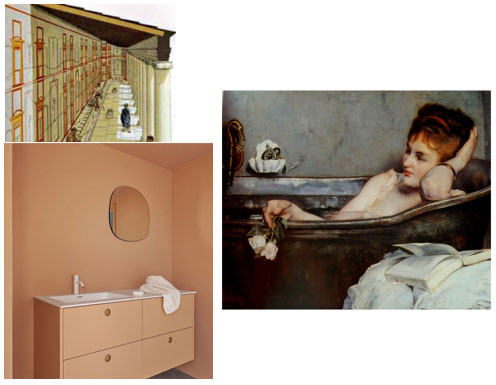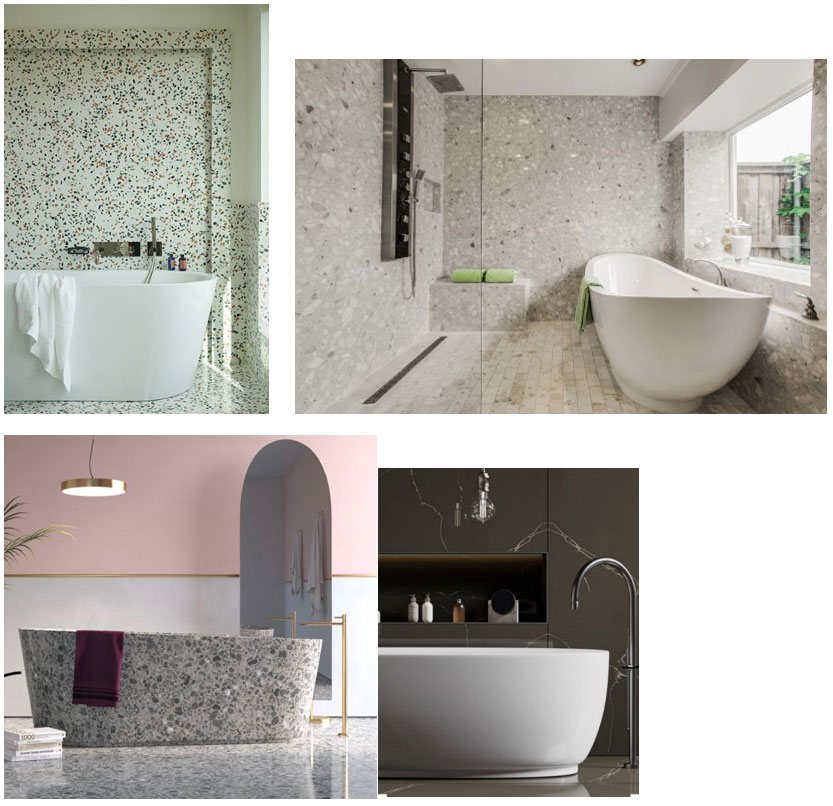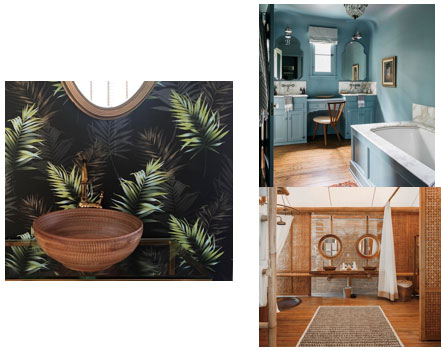Etymologically, the word bath comes from the Latin balneum, meaning the immersion of a body in water for hygienic, therapeutic or ritualistic purposes. This has assumed different meanings and functions across the ages and cultures.
In ancient Rome it was the place for body care, in fact the first thermal baths originated then. The lavatorium found in monasteries in the Middle Ages had a public hygienic function to counter the spread of diseases, and during the Crusades, baths became a place of sociability, with the inception of the Turkish bath and the introduction of the first decorated tiles and coloured ceramics.

In the 13th century, having a bath took on a ritualistic connotation, in fact, the first scented water was introduced and the function became private with the use of bathtubs. The Renaissance brought about the bathroom as we know it today, rich in marble and decor. Today, it is considered a personal and relaxing space, an important room that is built and decorated in different styles, trends and design elements.
It is a space that can be created starting from different elements, such as the choice of a single colour that will then be used in all or just a few elements, or a combination of colours that create harmony in tones or a visual contrast. Our input could also be a material, such as the Santamargherita marble agglomerate that can not only be functional but an actual design element, which the style of the room will be based on: an element which you can be very creative with. Just like in the examples here, SM Marble – Arabescato Bianco, SM Marble – Vendome, SM Quartz – Libeccio and SM Marble – Laguna, together with the large freestanding bathtubs, they are the central element of the whole room, the focal point which the furniture encompasses.

A starting object, or central object, could also be a single element in the room, be it a light, a washbasin or a piece of furniture; particular wallpaper or a certain floor pattern.
Lastly, the idea can be a theme, which is the sum and union of all the previous ideas, in which every element is chosen and designed to create a story. Hence, our bathroom can become a jungle or a ship and it can travel in time to another era by choosing a style that may be Art Deco, futuristic or Victorian. It can reflect the design of a culture or a country and therefore have an oriental or Provencal theme. To each their own style. To each their own bathroom.

Saveria Squarzoni
